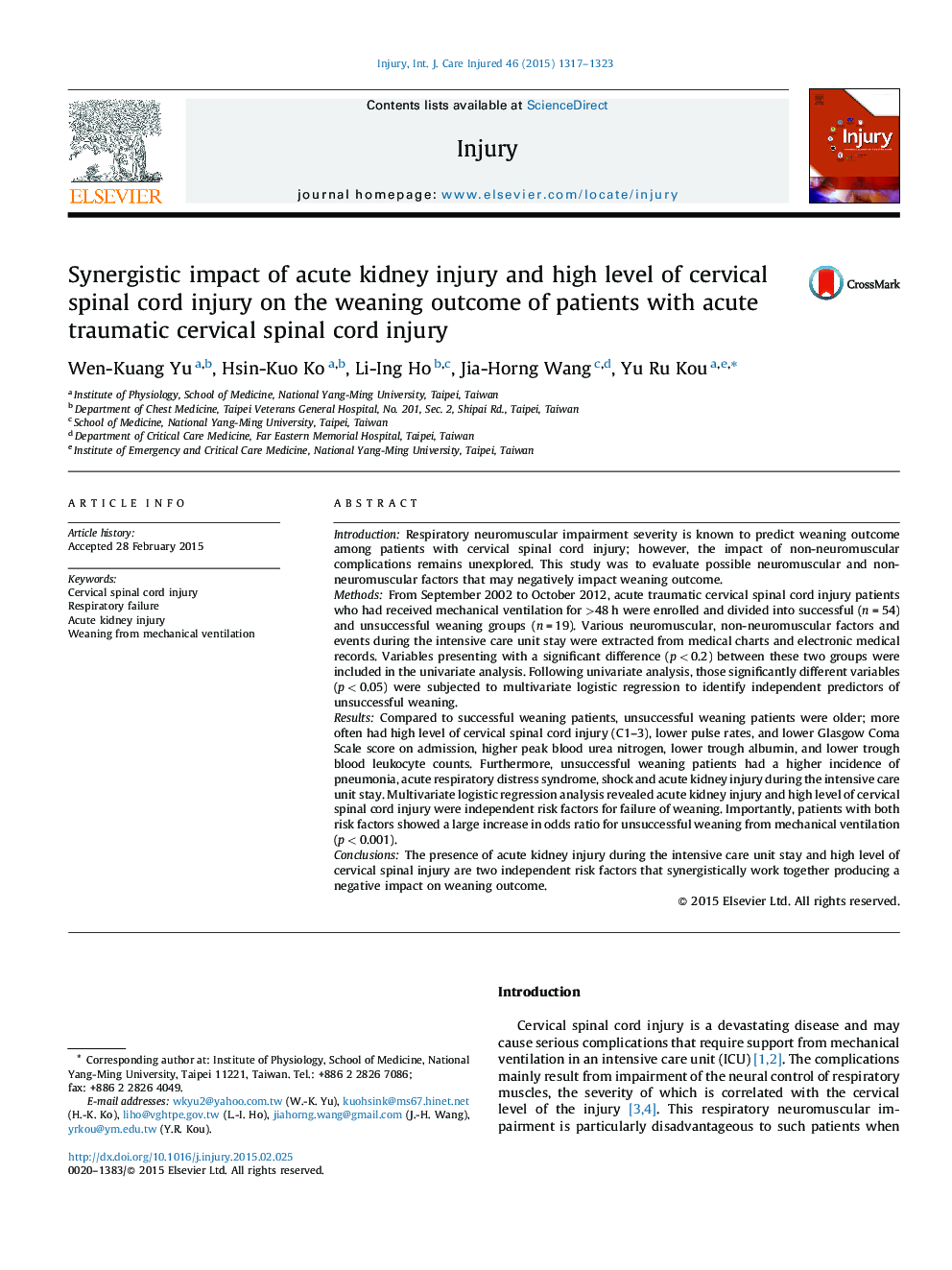| کد مقاله | کد نشریه | سال انتشار | مقاله انگلیسی | نسخه تمام متن |
|---|---|---|---|---|
| 6083312 | 1205989 | 2015 | 7 صفحه PDF | دانلود رایگان |
IntroductionRespiratory neuromuscular impairment severity is known to predict weaning outcome among patients with cervical spinal cord injury; however, the impact of non-neuromuscular complications remains unexplored. This study was to evaluate possible neuromuscular and non-neuromuscular factors that may negatively impact weaning outcome.MethodsFrom September 2002 to October 2012, acute traumatic cervical spinal cord injury patients who had received mechanical ventilation for >48 h were enrolled and divided into successful (n = 54) and unsuccessful weaning groups (n = 19). Various neuromuscular, non-neuromuscular factors and events during the intensive care unit stay were extracted from medical charts and electronic medical records. Variables presenting with a significant difference (p < 0.2) between these two groups were included in the univariate analysis. Following univariate analysis, those significantly different variables (p < 0.05) were subjected to multivariate logistic regression to identify independent predictors of unsuccessful weaning.ResultsCompared to successful weaning patients, unsuccessful weaning patients were older; more often had high level of cervical spinal cord injury (C1-3), lower pulse rates, and lower Glasgow Coma Scale score on admission, higher peak blood urea nitrogen, lower trough albumin, and lower trough blood leukocyte counts. Furthermore, unsuccessful weaning patients had a higher incidence of pneumonia, acute respiratory distress syndrome, shock and acute kidney injury during the intensive care unit stay. Multivariate logistic regression analysis revealed acute kidney injury and high level of cervical spinal cord injury were independent risk factors for failure of weaning. Importantly, patients with both risk factors showed a large increase in odds ratio for unsuccessful weaning from mechanical ventilation (p < 0.001).ConclusionsThe presence of acute kidney injury during the intensive care unit stay and high level of cervical spinal injury are two independent risk factors that synergistically work together producing a negative impact on weaning outcome.
Journal: Injury - Volume 46, Issue 7, July 2015, Pages 1317-1323
